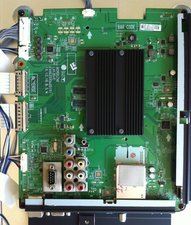How to re-flow a BGA chip
May need to re-flow a BGA chip on a LG TV’s mainboard. I understand that the temperature regimen is the key to success. Therefore, please suggest the best methodology. Please specify all stages for warm up and cool down with temperatures and durations for each. Also, do you believe a heat gun with a thermometer is enough or should I get a relatively inexpensive re-flow station where temperature can be set? Recommendations for liquid flux and thermal paste brands or whatever other advice on topic is greatly appreciated.
I would like to mimic the manufacturing process as closely as possible to get a lasting result, so if it helps, my TV is a 10 year old LG LED TV Model: 55LV5400-UB





Is this a good question?

 3
3 
 14
14  101
101
3 Comments
We would at least need some pics of the mainboard and BGA chip.
by Chris Stables
@imicrosoldering there are two IC's under there. I suppose one is talking about the video processor which is marketed as a LGE35230 but it is a BCM35230kfsbg BGA IC
by oldturkey03
@imicrosoldering any help and pointers, much apreciated :)
by tron